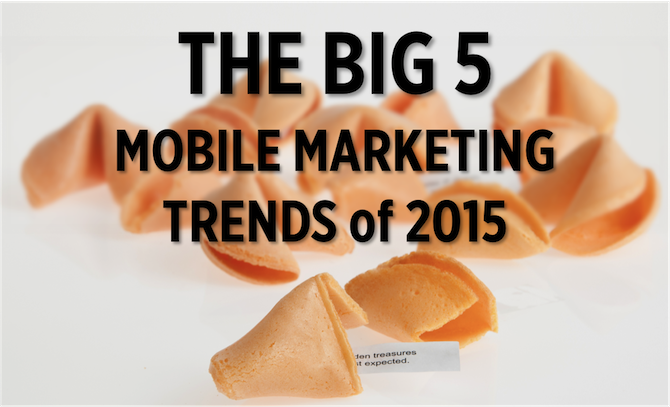2015 Mobile Marketing Trends
Last year, the mobile marketing & advertising industry finally got a seat at the big kids’ table, with the development of new ad formats, better re-targeting options, and a little bit of healthy controversy over the ethics of native advertising. Here are some predictions for what’s in store for the coming year:
- Bigger Screens Mean Better Creative
- Tablets vs. PCs
- Mobile Wallet
- iBeacon
- Native Advertising
1. Bigger Screens Mean Better Creative
There was a lot of buzz last year around the launch of the iPhone 6+, with its “bigger than bigger” 5.5 inch screen (and let’s not forget all the viral outrage over THIS). But, for marketers & advertisers, the iPhone’s new, larger screen sizes will be especially significant moving into 2015—as this trend towards larger devices also allows for larger and more impactful advertising creative.
The “it’s too small” argument, which has hamstrung mobile campaigns since the very first iPhone was introduced, is finally a diminishing concern moving into 2015. Creative limitations of mobile display ads, which require simple and striking design in order to be effective, will diminish as well, with larger placements allowing for more dynamic visuals.

Mobile Marketing Trends 2015 – The iPhone 6 Plus signals a trend to larger screens and stronger ad creative
2. Tablets vs. PCs
Projections vary somewhat, but the general market consensus is that 2015 will either be the year that tablet sales finally go toe-to-toe with PCs, or the year that tablets actually out-sell PCs. Regardless, the high saturation of tablet devices worldwide is a certainty in 2015, meaning that advertisers will need to re-think how they allocate ad spend in order to reach their target audience.
PC’s aren’t going away any time soon, obviously, but for functions like web browsing & online shopping, tablets are taking over (especially for higher-income demographics). This is good news for marketers & advertisers, as tablets combine the screen size and creative options of a desktop with the mobility, targeting, and convenience of a smartphone.
Related:
Mobile Advertising vs. Desktop Advertising
3. Mobile Wallet
A heated battle is currently underway in the world of mobile payment options, between the beacon-enabled Apple Wallet and the retailer-driven Current C (which uses QR-code scanners to bypass a credit card swipe). Whichever format emerges victorious in 2015 (most likely Apple), the key takeaway for marketers is realizing the full extent to which mobile devices have become an integral part of the shopping process, in-store and out.
According to a report from the Google Shopper Marketing Council, shoppers spend an average of 15 minutes paying attention to their phones, every time they visit the store. The fact that manufacturers and retailers alike are looking to mobile as an avenue to streamline the in-store experience shows just how much the general mindset is changing, with in-store mobile strategies now considered a minimum requirement for competitive marketing.
Related:
“Mobile Is for Closers” – Why Smartphone Advertising Dominates at Point of Purchase
4. iBeacon
Will 2015 be the year that iBeacon goes from a buzz word to a functioning part of the in-store experience? It’s tough to say. The major hurdle to widespread adoption is fairly intimidating: all consumers must go through the hassle of voluntarily opting-in to receive beacon marketing. Which means they also must have the store’s native app installed on their device and running in their browser.
This is going to be a challenge even for major brands & retailers with popular native apps. For smaller businesses, the only real option is joining a “beacon network;” a native app representing numerous cooperating retailers, where the number of participating businesses serves as the user’s incentive for an app install.
In the end, the success or failure of iBeacon will hinge on how well businesses can leverage consumer incentives to drive use.
5. Native Advertising
When FaceBook announced that its in-feed native ads were driving 49x the click through of traditional banner ads, every advertiser on the planet sat up and took notice. Native advertising became such a hot industry focal point, it even found its way into pop culture when comedian John Oliver ran this segment during his HBO show, Last Week Tonight.
Moving into 2015, the hype surrounding native ads will be tempered to make room for experimentation and evaluation, determining true cost-effectiveness. And, as consumers grow more wary of more deceptive native tactics, we’ll finally have some idea of what the format’s real, longterm value will be.
Related:

